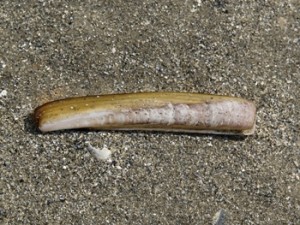“That’s stupid! It doesn’t look like a razor!”
The boy was ten and had asked me what I’d found on the beach on Pawleys Island. I held up something like what you see in the picture and told him it was a razor clam. He didn’t get it, to put it mildly.
He had a good excuse. No razor he had ever seen looked like what I was holding in my hand. He wasn’t old enough to remember straight razors.
Generations have their reference points
For me, Marines landing in the Dominican Republic in 1965 is a memory. For my children, it’s history. My grandchildren may not even study it.
As for technology, I placed my first phone call through an operator. My children grew up with landlines as the norm. My grandchildren probably won’t know what a landline is.
The world changes and so do the social, technological, and political reference points for each succeeding generation. If you’re writing a book and you’re over thirty, you need to think about that.
Your reference points are not their reference points
The problem with social and historical references is that many of your readers may not get them. If you want an example of how that works, click over to the Beloit College Mindset List for the Class of 2018. The Mindset List is described as follows.
“Each August since 1998, Beloit College in Beloit, Wis., has released the Beloit College Mindset List, providing a look at the cultural touchstones and experiences that have shaped the worldview of students entering colleges and universities in the fall.”
Reference points, blogs, and books
If you’re writing a blog post, use those social references. Blog posts, like newspaper stories, are creatures of the moment. But if you’re writing a book, choose references and examples that will be good for years, if not decades. If you’re turning your blog posts into a book, make sure the references and examples work for everyone.
Making references work
If you’re not sure whether the reference you’re using is familiar to your reader, there are some things you can do. If you’re in digital media, you can link to a longer explanation, like this one for the Johnson and Johnson Tylenol Crisis (1982). Otherwise you need to sketch in the details of the reference so any reader will get your message.
You can also use different names for the same thing. The boy probably would have understood a name for the same clam: “jackknife clam.”
